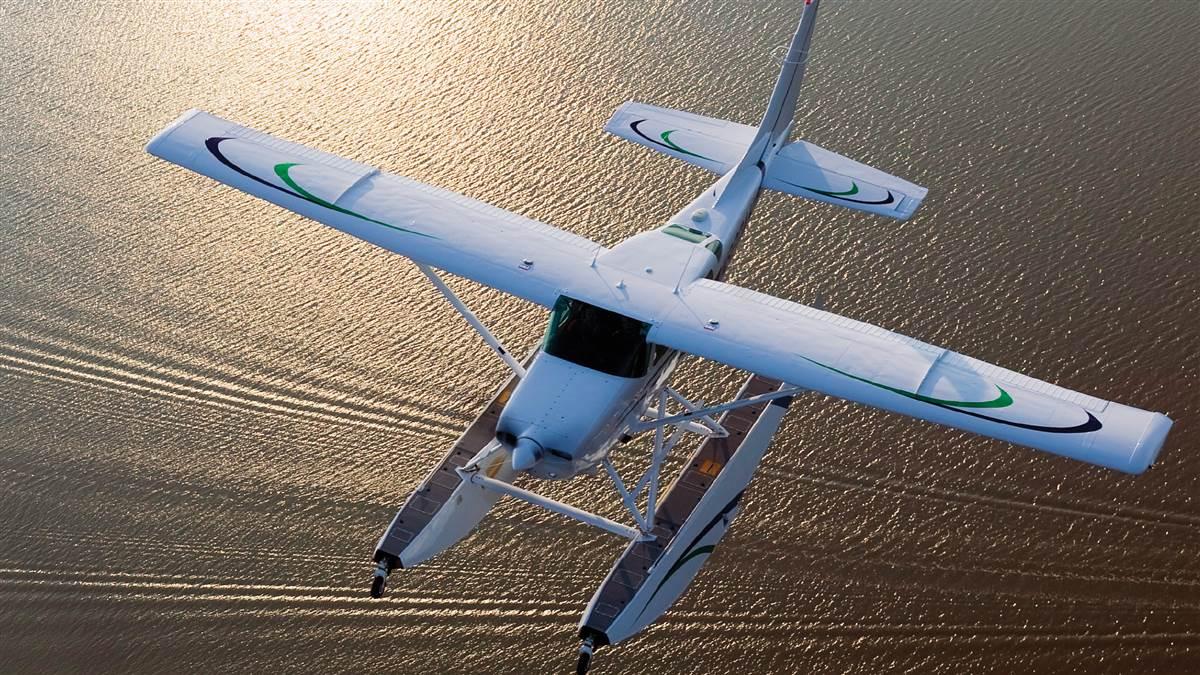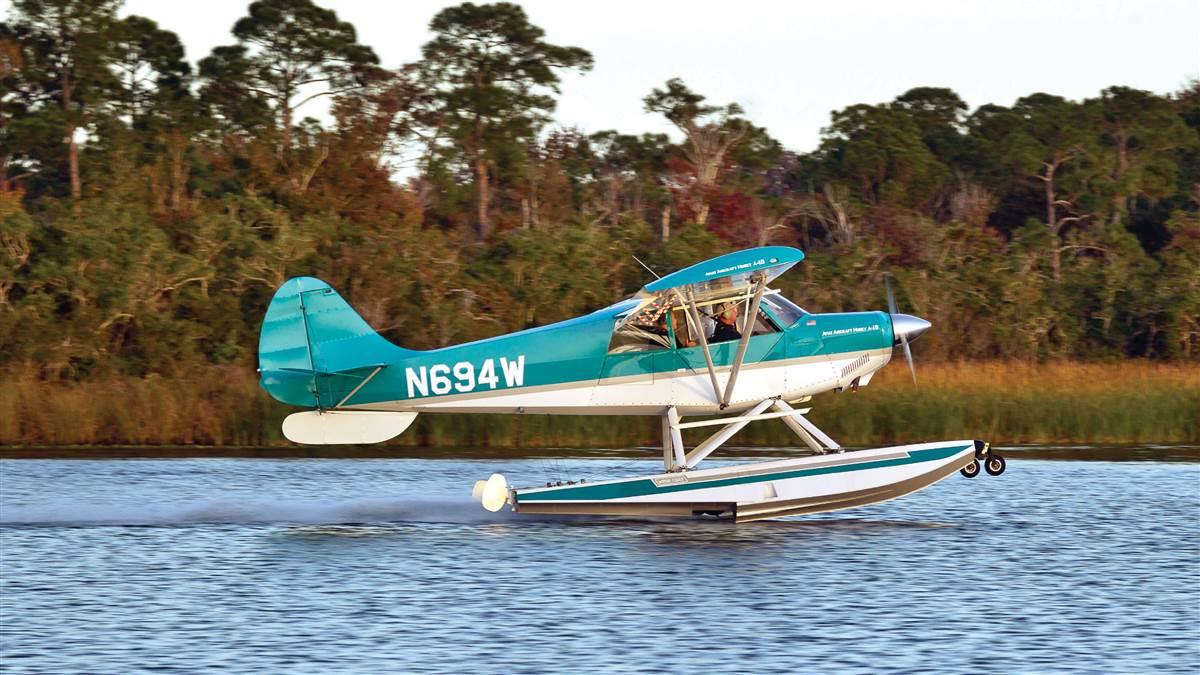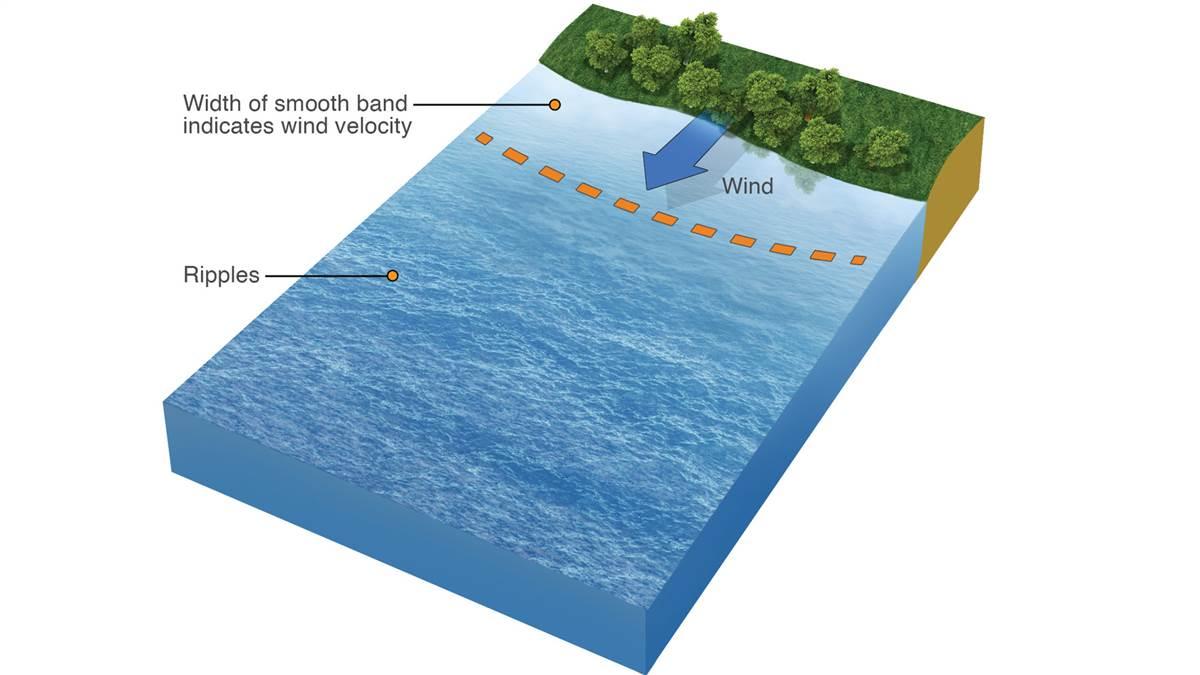Float flying fun
Add a seaplane rating for a new challenge and unlimited adventure

Earning the seaplane rating opens doors to exciting adventures and hones your piloting and decision-making skills in the process: teaching you to look outside for traffic in the air and on the surface, use outside references to determine wind direction and water quality, and figure out how to use the wind to your advantage to maneuver on the water.

Illustrations by Charles Floyd
Glassy Surface
On calm-wind days, water will appear glassy and can degrade a pilot’s depth perception. Set up over land and maintain a constant attitude/airspeed descent at 100 to 200 feet per minute until touching down. Rough water is indicated by whitecaps (below). Land with full flaps and add just enough power before touchdown to softly glide onto the water. Think soft-field technique.
Rough Surface

“It’s a lousy boat and an awful airplane, but together, it’s a whole lot of fun,” quips ProMark Aviation Services owner and designated pilot examiner Ken Wittekiend. The PA–12 on amphibious floats isn’t as maneuverable as a boat, and it doesn’t perform as well as it does on wheels, but being able to fly and land on water more than makes up for those shortcomings.
Make your own runway
Understanding where the wind is coming from and what it is doing to the water is known as “reading the water” and is crucial to seaplane operations. While listening to the weather at a nearby airport or seaplane base can be helpful in determining wind direction, it’s important to look for cues in the air, on the ground, and on the water to determine the exact wind direction. On water, particularly open water on a lake where you don’t have any confinements—as you would on a river—you can maneuver to land and take off directly into the wind. You make your own runway.
Look for smoke or flags flying at houses and docks along the water. Take a look at the water for additional clues to wind direction and velocity. On a lake, calm or glassy water along one side with the rest of the water being wavy indicates that the wind is coming from the smooth-water side, known as the “protected” or “upwind” side of the lake. Because the wind is blowing over the trees, houses, and other obstructions on the ground, the water closest to a protected shore is calm and the rough water is farther out. A narrow band of glassy water beside the shore indicates stronger winds, while a wider stretch of calm water indicates lighter winds. Glassy water that reflects like a mirror over an entire lake indicates calm winds. Light winds create small waves, while 6- to 10-knot winds create wind streaks running parallel to the wind in the water. Waves are always perpendicular to the wind, and their shadows make them appear to move downwind. When the winds reach 12 to 15 knots, whitecaps begin to form, indicating rough water.
Once you’ve determined the wind direction, make sure the landing area is clear of obstacles. At a safe altitude, about 500 feet above the water (too high and you won’t be able to see the obstructions or read the water), fly over the intended landing area, checking for things such as power lines, debris, other seaplanes (in the air or on the surface), boats, swimmers, shallow areas, and buoys. Fly over the area in both directions. Changing how you are positioned relative to the sun will make it easier to spot obstacles and read the water. For example, power lines are almost invisible when looking into the sun but readily identifiable with the sun behind you.
When you are on the water and want to prepare your “runway” for takeoff, scan the area for obstacles. Give boats the right of way and don’t assume they will steer clear of you. Boaters are often curious about seaplanes and will come right up to it to get pictures—they don’t understand that the seaplane isn’t as maneuverable as a boat, counsels ProMark Aviation Services certificated flight instructor Tres Clinton. In addition to ensuring the area is clear of obstructions, note the wind so that you can take off directly into it. The seaplane will naturally weathervane into the wind, setting up perfectly for takeoff.
Water work
Pilots can maneuver a seaplane on the water by taxiing or sailing. Three types of taxiing—idle or displacement, step, and plow—allow you to move forward and compensate for wind, control your taxi speed, and maneuver in confined areas. Sailing, with power either on or off, lets you maneuver while floating backward.
During idle or displacement taxi, the seaplane motors along at idle power and can be steered with the rudder or with the assistance of water rudders on the back of the floats. Idle taxi is perfect for traveling shorter distances, docking, mooring, or weathervaning into the wind to prepare for takeoff.
Step taxi is a higher-speed taxi on what is called the “step” of the float. The FAA Seaplane, Skiplane, and Float/Ski Equipped Helicopter Operations Handbookdefines the step as “an abrupt break in the longitudinal lines of the float or hull, which reduces water drag and allows the pilot to vary the pitch attitude when running along the water’s surface.” During step taxi, aerodynamic lift from the wings supports 30 percent of the aircraft, and the floats support 70 percent as the airplane glides across the water. Pilots can step-taxi straight ahead or carefully in a turn. The technique is used to travel farther in a shorter period of time and to depart confined areas. For example, after eating lunch and returning to the airplane on the Colorado River to take off, I step-taxied under the bridge and lifted off just after the bridge so that I could get airborne as soon as possible and climb, because of a dam with powerlines downriver.
Plow taxi is a tool you can use to counter the seaplane’s weathervaning tendency. By adding full power to get the nose of the aircraft up and then reducing to partial power to maintain that attitude, you move the center of buoyancy and pivot point of the aircraft farther aft and expose more of the front of the floats to the wind, all of which works together to counteract the weathervaning tendency. The plow turn is effective, but pilots should use this technique sparingly because the increased power setting causes more water spray to hit the propeller—which can damage the blades.
Sailing can be used in higher winds to float backward, still pointed into the wind but maneuvering to the left or right. Beginners will likely use only the power-off sailing technique because the winds need to be so high for power-on sailing that the water would be too rough for inexperienced seaplane pilots. To sail with the power off, use the rudder to point the tail in the direction you want to go and then apply opposite aileron.
Moor challenges
After learning how to maneuver the aircraft on water, you can combine those skills to moor, dock, ramp, and beach the aircraft. Mooring is a game of timing and energy management. The goal during training is to taxi to a buoy, shut down the aircraft, unbuckle, step out onto the float, and touch it—without falling in. Too fast, and you rush yourself to get out of the airplane and blow right by. Too slow, and you come to a stop before you reach the buoy. Another challenge is that mooring conditions are never the same. You might get a good idea of how far back to shut down the aircraft and glide to a soft stop beside the buoy in calm winds, but add a 5-, 10-, or 15-knot headwind—or a current—and the distance changes. While there are cases in which you might moor the aircraft, the exercise is intended to prepare you for docking without damaging the floats before the technique and energy management judgment is developed.
Once you can safely moor, you’ll move to a dock where you can plan an approach into the wind. The goal is to lightly coast to the dock so you can step out onto the float and then the dock without rushing or hitting the floats on the dock.
“The skill of a pilot isn’t judged anymore on your landing, it’s your docking,” Clinton says.
Splash ’n go
Takeoffs, landings, and splash and goes are the most exciting part of seaplane training and cover glassy, rough, and confined-area takeoffs and landings.
All takeoffs involve getting up on the step, which requires a feel and sight picture that you’ll acquire after a few practice runs. Pointed into the wind, apply full power and hold the control stick full back. Watch as the nose of the aircraft rises dramatically. Continue holding the stick back and watch for a second, smaller rise. Once you see this rise, relax the back-pressure on the stick and let the aircraft settle onto the step and accelerate.
During landing, carry power to touchdown and maintain a slight nose-up pitch attitude. Upon touchdown, immediately idle the power and hold the stick full back (unless you are transitioning from landing to step taxi) to prevent the front of the floats from dragging in the water, leading to a waterloop. Touching down on the water greatly increases the drag on the floats, causing the airplane to want to nose forward.
Calm waters call for glassy-water takeoff and landing techniques. The water acts like a mirror and destroys depth perception. For this reason, a stabilized approach is required. Fly in low over or beside a shoreline; at the end of the shore, be configured at a specified pitch attitude/airspeed, flap setting, and a rate of descent of about 100 to 200 feet per minute. Hold the pitch attitude until touchdown and immediately reduce the throttle to idle and apply full back elevator.
The takeoff run on glassy water will take longer because of increased water drag, and it will be more difficult to lift off, so try lifting one float out of the water first. During the climbout, scan your instruments to ensure a positive rate of climb. Depth perception won’t be accurate, and failing to check your instruments could result in inadvertently flying back onto the water.
Rough-water and confined-area takeoffs use similar techniques. The goal is to get airborne as quickly as possible, either to get off rough water that can stress the floats or to get in the air in a short distance because of the surrounding terrain. In a Super Cruiser, begin the takeoff run with partial flaps and after accelerating on the step, pull to full flaps and rotate at the same time. Immediately establish a level pitch attitude to build airspeed in ground effect before retracting one notch of flaps and climbing out.
On landing, both confined-area and rough-water landings utilize full flaps. For rough-water landings, think soft-field. Add some power in the flare so that you touch down softly at the lowest possible airspeed. Immediately bring the power to idle and hold the control stick full back. For confined-area landings, think of a short-field or precision landing in which you need to land within 200 feet of a specified spot. However, instead of having a firm touchdown as you do on land, add power to set down softly. Floats do not have shock absorbers, and landing too hard could damage the floats where they connect to the aircraft.
Ready for the ride
The seaplane rating is often dubbed the most fun rating you can get. After six to eight hours of training, you are ready for your checkride, so most people take only a long weekend to get the rating. There’s no knowledge test—just the oral and practical exam. The flight portion consists of takeoffs, landings, and water work—no stalls, steep turns, or other airwork.
ProMark Aviation Services builds fun into its curriculum—such as planning a lesson about landing and docking around a convenient place to eat lunch near the water. “We’re going to have fun first,” Clinton says, “and learn something along the way.” As this new seaplane pilot can attest, that’s a winning combination.

 Notes on floats
Notes on floats You can judge the direction of the wind by looking at a pond or lake. The smooth band near the shore is the upwind side of the lake, where the wind is coming from.
You can judge the direction of the wind by looking at a pond or lake. The smooth band near the shore is the upwind side of the lake, where the wind is coming from.

